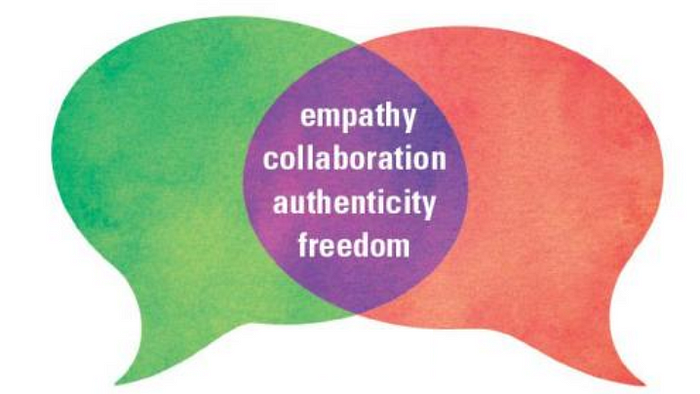(Also posted on Medium)
Lately, my mind is constantly returning to the thoughts and ideas in the book Non-Violent Communication by Marshall Rosenberg. As a father and husband, building deeper connections with my children and wife is important to me, and the teachings from this book helps do that.

The learnings have started to change how I communicate with the people I love and the people I choose to interact with.
I’m still hasty; I often start talking without considering others’ needs and feelings, but I have noticed myself contemplating conversations much more often and how I could have made a better connection. Now I try to slow down and be deliberate with my thoughts when speaking with folks.
Most of the time, I find it’s better to say nothing and take your time than to say or do something hurtful you can never take back.
Here are three lessons I thought were important that I wanted to share with you.
1. You are responsible for your feelings.
- Now, other folks can stimulate those feelings with what they do, but you are responsible for how you interpret and react to those stimulations.
- What may make you feel anger or frustration may make someone else feel gratitude. — Your feelings are an intersection of what people are doing and what your needs are at the moment
For example — If you are sitting home on a Saturday night with your family and no one is speaking or interacting with each other, maybe people are on their phones, reading, or watching television.
· If my need at this time is to have more connection, I may feel frustrated that we aren’t speaking or interacting with each other
· On the other hand, if my need is for solace, I may feel content we aren’t speaking or interacting with each other
2. Empathy — You can make better connections with people by investing yourself and time to understand their feelings
- Just trying to be empathetic is often enough — you may get it all wrong, but the effort you put into understanding someone else is often enough to make a connection and let them know you care about their feelings and needs.
For example — Your wife is sitting home on a Saturday night with the family, and no one is speaking or interacting with each other; maybe people are on their phones, reading, or watching television.
· She says, “I can’t believe everyone is on their phones. This is supposed to be family time.”
· I could say, “It sounds like you are frustrated the family isn’t connecting. Is that right?” and work to understand her feelings and needs that aren’t being met.
· Then, you can discuss what can be done to meet her needs. Maybe it’s not something right away, but tomorrow or later in the week, we can plan to play a board game or carve out no screen time.
3. Gratitude — Showing deep gratitude
- People are taught to say thank you and be polite, which is great. I believe manners are the oil that keeps the cogs of society running smoothly.
- I want to share a technique in the book that supercharges showing appreciation. In three parts, you communicate to the person you are showing appreciation to.
- What did the person do that you are appreciative of
- How did the action make you feel
- What need of yours did it meet
For example
· My family is sitting home on a Saturday, and no one is speaking or interacting with each other; maybe people are on their phones, reading, or watching television
· I feel frustrated because I want us to have a better connection, and my wife notices. She suggests then persuades the kids that we should go on a family walk.
· Later that evening or the next day, I could say something like
· I want to say thank you for suggesting the family walk yesterday
· I felt content and happy that we went on a walk together. My heart is full.
· It met the need I have for us to be closer and better connected as a family.
That’s it. Thanks for reading, and I hope this inspires you to take a minute or two to build better connections with those around you.